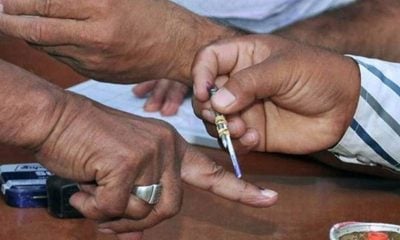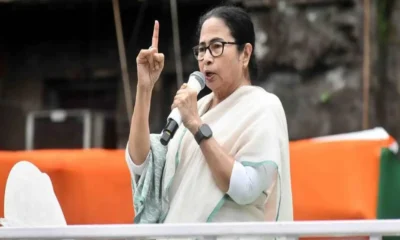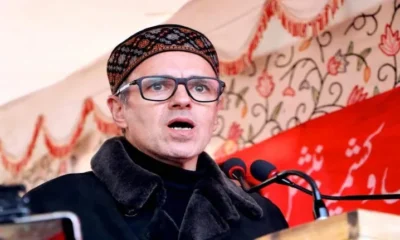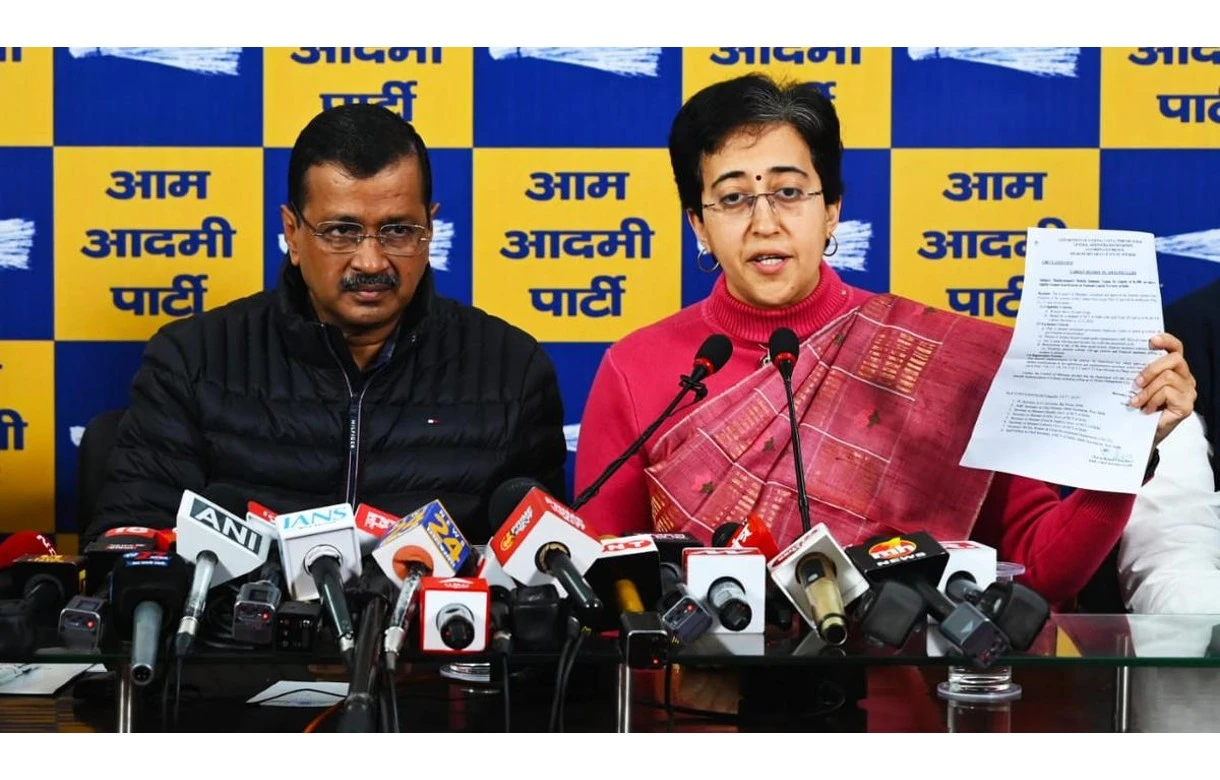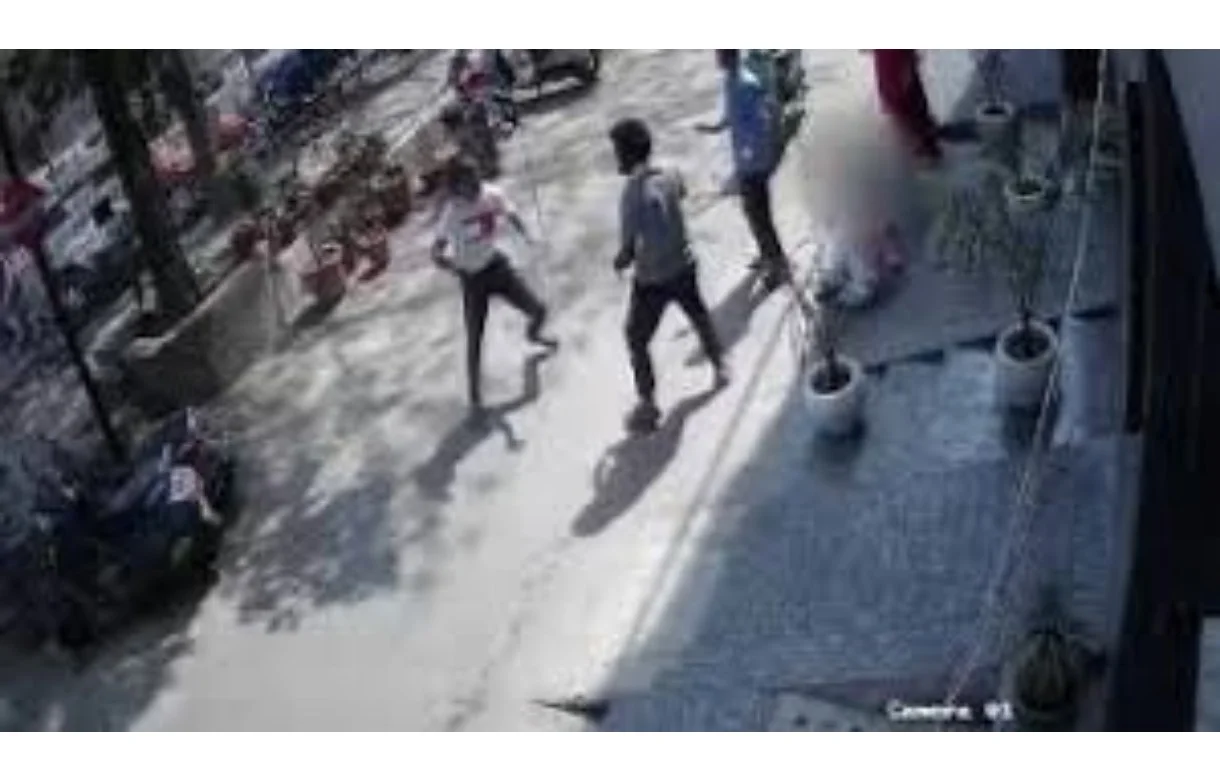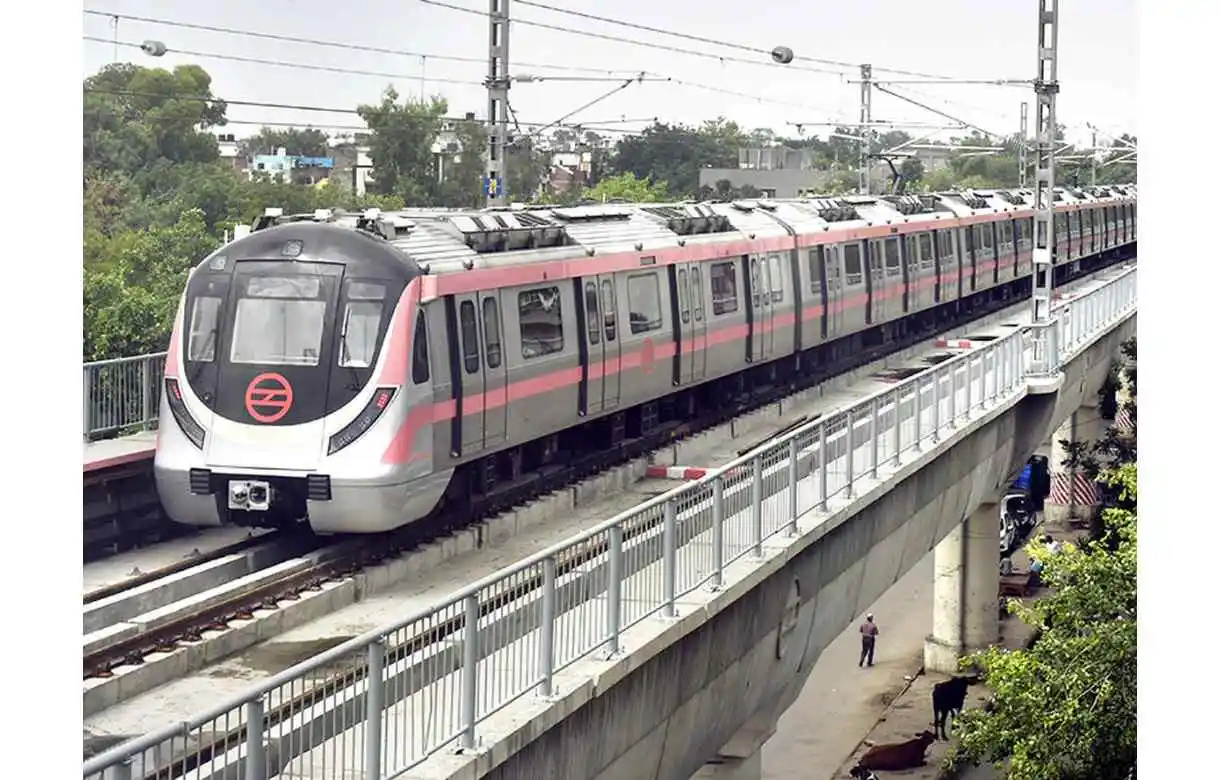The feisty CM may just use it to advantage
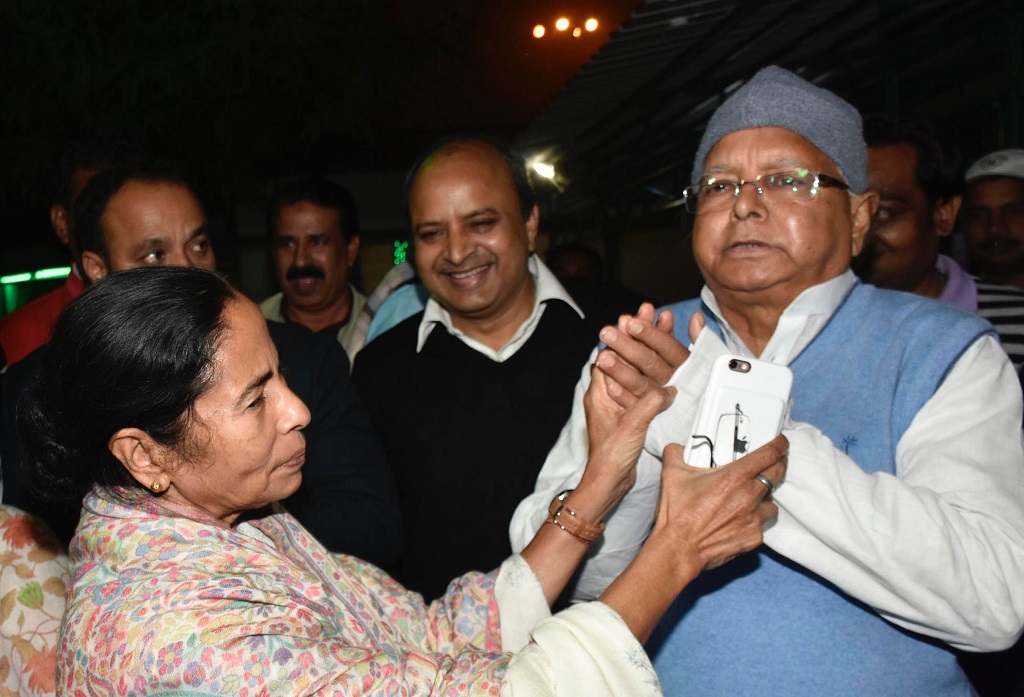
TWO’S COMPANY: West Bengal CM Mamata Banerjee with RJD chief Lalu Prasad Yadav in Patna
How does West Bengal Chief Minister Mamata Banerjee plan to handle the mess resulting from the demonetization move by Prime Minister Narendra Modi?
There are several opinions though no one can really look into the mind of the famously unpredictable Trinamool Congress (TMC) supremo. At this point she is maintaining a pointedly antagonistic posture and has pledged to oust Modi from politics. She made the declaration first at an all- India Trinamool Congress rally in Lucknow on November 29 and reiterated it in Patna, along with Rashtriya Janata Dal chief Lalu Prasad Yadav and his wife, Rabri Devi (both former Bihar chief ministers), a day later.
How she plans to achieve the eviction of Modi from politics is unclear; but, recalling the alliances she has made and severed in her political career, she has a penchant for eyebrow-raising deals – such as the overture to her archenemy, the CPI(M). At the same time, to her credit, it has also been proven that she has a knack for putting her finger on the pulse of the people. It is a knack she uses to her advantage. She is also not averse to quick course corrections if the need arises.
One way to look at this issue is to study the funding scenario that may be creating havoc within the TMC. The basic source of funds flow in a government would be in two phases. The first is the state revenue that it can generate; the second is its allocation of central revenue. At this point, the state revenue has been severely curtailed because of the lack of generating sources, namely, industry. This has put the state government’s finances in dire straits.
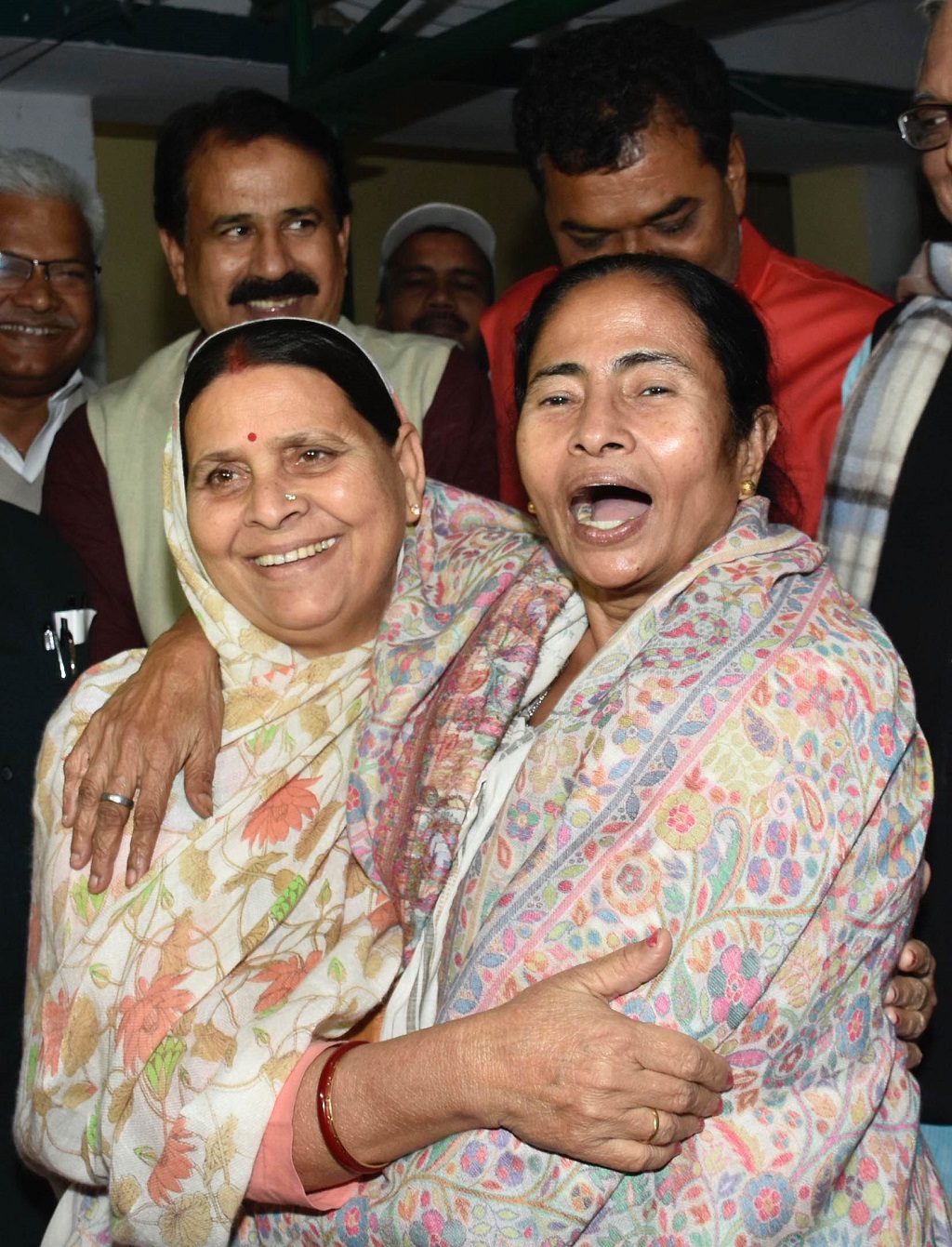
WARM EMBRACE: Banerjee meets former Bihar chief minister Rabri Devi
According to recent budget figures, the state’s debt burden has increased by a whopping 64 percent in the past six years. In FY 2010-11 the state’s outstanding debt was close to Rs 1.86 lakh crore. That was the “miserable” state of the finances of West Bengal that Banerjee inherited from the Left Front’s chaotic 34-year rule. But by 2015-16 this debt had spiked to a massive 64 percent (from the 2010-11 base) to Rs 3,08,800 crore, as per published budget estimates.
That places the state in third position among the most indebted states of the country, behind the highly industrialized state of Maharashtra (Rs 3,79,360 crore, a spike of 34.5 percent in the past four years) and poll-bound Uttar Pradesh (Rs 3,27,470 crore) as per published reports quoting state budget estimates.
What is the connection of the state’s indebtedness with the demonetization move? To break the state’s economy down to the basics, a complete vacuum exists in the productivity of the state, leading to nil or even negative growth in employment. The Banerjee government found a novel – albeit temporary – way out of this mess, by not being too strict on “syndicates” that have plagued the supply chains of real estate majors in the state. While real estate seemed to be booming, so were the “syndicates”, a policy first initiated by the Left Front.
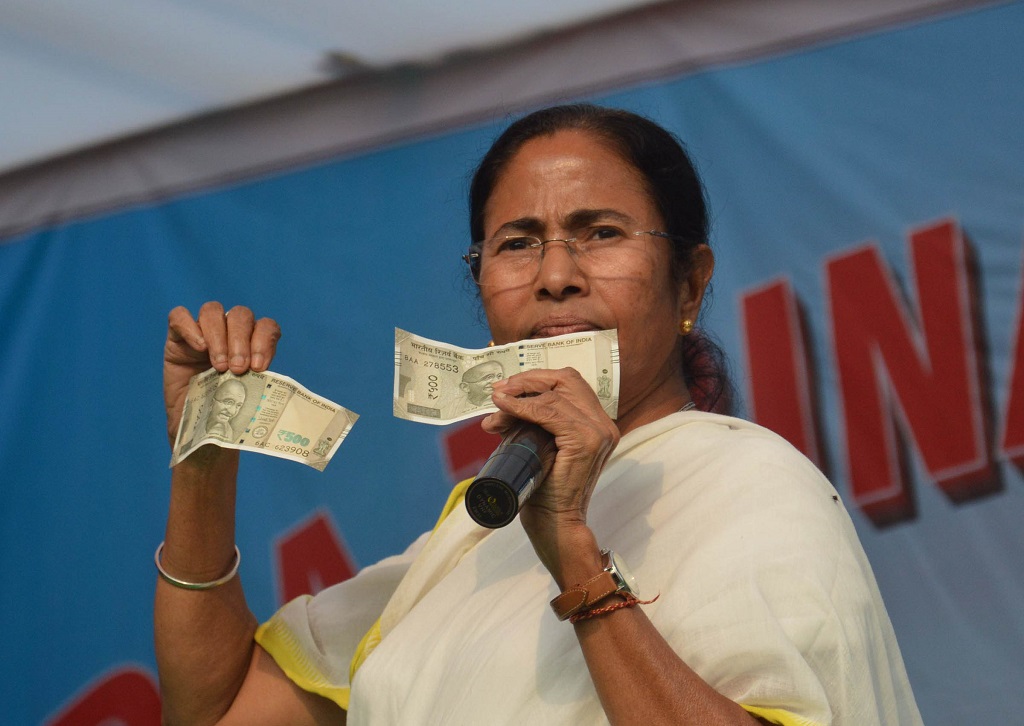
BEING MAMATA BANERJEE: The Trinamool supremo has the unique ability to turn obstacle into opportunity
Technically, these are methods that kept some of the TMC workers off criminal ways, and the rest received doles during the Pujas for all “registered” pujas, to last them the festive days. While the modus operandi may seem laughable to the economist, it did keep a leash on the “ambitions” of the people.
Add to that the huge spike in Fake Indian Currency Notes (FICN) in the north-eastern districts of the state, namely, South Dinajpur, Nadia, Malda, North 24-Parganas and others. With banks few and far between, about 86-90 percent of all transactions in these districts were in cash. And, according to last estimates, 45-50 percent of those cash transactions were in FICN. A major portion of the estimated Rs 400 crore FICN in circulation sloshes around in this region.
What happened was that the FICN was not all used in developing terrorist sleeper cells (of which the maximum in India are in these districts), or in growing and marketing poppy for the manufacture of heroin (as in Gopalganj or Kaliachak in Malda). Through daily transactions, it also infiltrated farmers’ homes and small traders’ small savings.
All was hunky-dory for as long as the Rs 500 and Rs 1,000 notes remained legal tender. With the Prime Minister’s November 8 evening announcement, this entire economy virtually vanished into thin air. FICN apart, this cash economy was generating peace (as the Kaliachak “riots” of early this year showed). It was a “live and let live” policy that kept peace here. Now it could be up for “grabs” to a situation that even Banerjee might not be able to control.
However, being Banerjee, she has found an opportunity in this desert. She has been able to raise her voice and it has been heard around the country. Quite some time back, on the assurances of the now-Saradha-scam-discredited MP, Kunal Ghosh, she had aspired for the Dilli ka masnad. Today, she has two reasons to push her agenda: the dire straits West Bengal is in after the demonetization and a deep-rooted desire to be back in Delhi, where she thinks she belongs.
Hence the Mamata Banerjee diatribe. She had forecast that things would get really messy as ‘pay day’ approached. They have. She is unwilling to let go the advantage and Modi should remain wary of this lady who could, if not handled with kid gloves, end up being the lead chronicler of Indian politics in 2017. For Banerjee, her state is at stake, and equally so is her very credibility as a political mentor.
By Sujit Bhar
[vc_video link=”https://www.youtube.com/watch?v=tFhZwGVuytg”]





